

Queer Places:
New York University, New York, 10003, Stati Uniti
Juilliard School, 60 Lincoln Center Plaza, New York, NY 10023, Stati Uniti
Hotel Chelsea, 222 W 23rd St, New York, NY 10011, Stati Uniti
Independent Jewish Cemetery, 30 Atlantic Ave, Sag Harbor, NY 11963, Stati Uniti
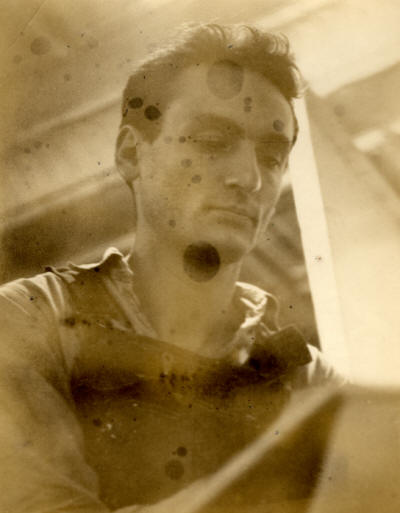 Larry
Rivers (born Yitzroch Loiza Grossberg, August 17, 1923 – August 14,
2002) was an American artist, musician, filmmaker and occasional actor. Rivers
resided and maintained studios in
New York City,
Southampton, Long Island, and
Zihuatanejo, Mexico.
Larry
Rivers (born Yitzroch Loiza Grossberg, August 17, 1923 – August 14,
2002) was an American artist, musician, filmmaker and occasional actor. Rivers
resided and maintained studios in
New York City,
Southampton, Long Island, and
Zihuatanejo, Mexico.
Larry Rivers was born in the Bronx to Samuel and Sonya Grossberg, Jewish immigrants from Ukraine.[1][2] From 1940–45 he worked as a jazz saxophonist in New York City, changing his name to Larry Rivers in 1940 after being introduced as "Larry Rivers and the Mudcats" at a local pub. He studied at the Juilliard School of Music in 1945–46, along with Miles Davis, with whom he remained friends until Davis's death in 1991.
Rivers is considered by many scholars to be the "Godfather" and "Grandfather" of Pop art, because he was one of the first artists to really merge non-objective, non-narrative art with narrative and objective abstraction.
Rivers took up painting in 1945 and studied at the Hans Hofmann School from 1947–48.[1] He earned a BA in art education from New York University in 1951.[1] He was a pop artist of the New York School, reproducing everyday objects of American popular culture as art.
In 1951 Dwight Ripley offered to back the Tibor de Nagy Gallery opened by John Bernard Myers as gallery director. Dwight missed the excitement generated by Peggy Guggenheim's art gallery, closed in 1947 when she followed the last of the exiled Surrealist back to Europe. In London, his Oxford contemporary Peter Watson had helped found the Institute of Contemporary Arts and was planning shows to feature the painters Francis Bacon and Lucian Freud. Encouraged, probably goaded by this example, Dwight turned to his art-critic friend Clement Greenberg for help. On the Monday evening of January 23, 1950, he took aspiring art dealer John Bernard Myers to Greenberg's apartment in Greenwich Village. "Ripley and John Myers," confirmed Greenberg's biographer 47 years later, "came to Clem's apartment to consult with him about a noncommercial gallery that Ripley would finance as silent backer and Myers would run." Greenberg suggested the initial artists, Dwight wrote the first check, and the result was Tibor de Nagy Gallery, which opened its doors that December and rapidly became one of the influential art galleries in New York. In its first full year Dwight provided the gallery with more than 5.000$, or five time its annual rent. This was an historic contribution. Tibor de Nagy sponsored the first solo shows of Larry Rivers, Grace Hartigan, Helen Frankenthaler, Kenneth Noland, Fairfield Porter, artists whose works would alter the conventions, then supreme, of Abstract Expressionism. When the gallery's director John Myers published the first chapbooks of poets John Ashbery, Frank O'Hara, and Kenneth Koch, Dwight's support altered the conventions of poetry as well.
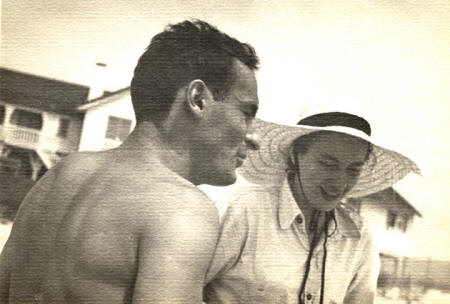
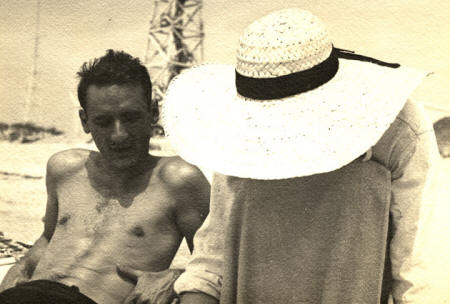
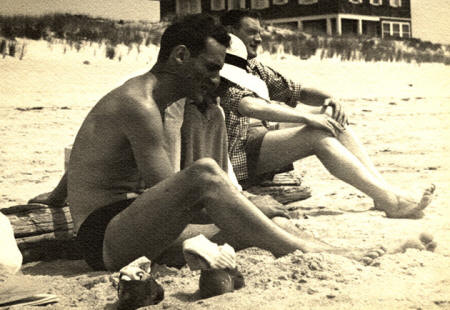
Larry Rivers with Grace Hartigan and John Myers
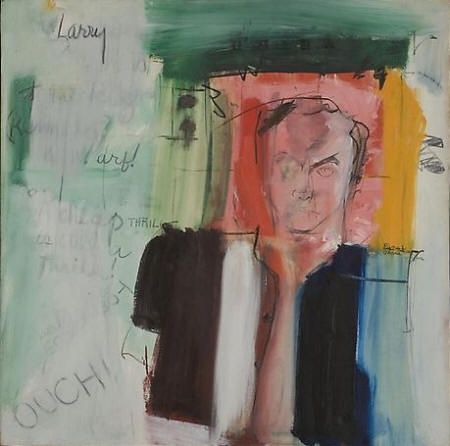
LARRY RIVERS and FRANK O'HARA
Portrait and Poem Painting
1961
oil on canvas
Private Collection
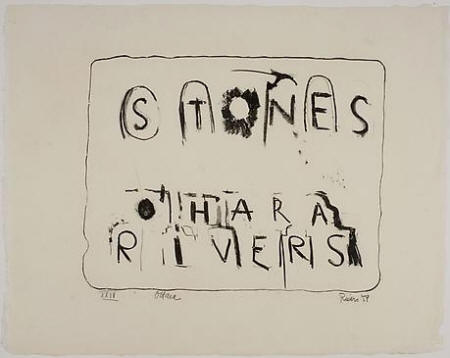
LARRY RIVERS and FRANK O'HARA
Stones
1959
suite of thirteen lithographs
18 x 23 inches
.jpg)
Hotel Chelsea, New York City
Rivers was one of eleven New York artists featured in the opening exhibition at the Terrain Gallery in 1955. During the early 1960s Rivers lived in the Hotel Chelsea, notable for its artistic residents such as Bob Dylan, Janis Joplin, Leonard Cohen, Arthur C. Clarke, Dylan Thomas, Sid Vicious and multiple people associated with Andy Warhol's Factory and where he brought several of his French nouveau réalistes friends like Yves Klein who wrote there in April 1961 his Manifeste de l'hôtel Chelsea, Arman, Martial Raysse, Jean Tinguely, Niki de Saint-Phalle, Christo, Daniel Spoerri or Alain Jacquet, several of whom left, like him, some pieces of art in the lobby of the hotel : for payment of their rooms. In 1965 Rivers had his first comprehensive retrospective in five important American museums.
His final work for the exhibition was The History of the Russian Revolution, which was later on extended permanent display at the Hirshhorn Museum and Sculpture Garden in Washington, DC. During 1967 he was in London collaborating with the American painter Howard Kanovitz. In 1968, Rivers traveled to Africa for a second time with Pierre Dominique Gaisseau to finish their documentary Africa and I, which was a part of the groundbreaking NBC series "Experiments in Television". During this trip they narrowly escaped execution as suspected mercenaries.
During the 1970s Rivers worked closely with Diana Molinari and Michel Auder on many video tape projects, including the infamous Tits, and also worked in neon.[3]
Rivers married Augusta Berger in 1945, and they had one son, Steven.[2] Rivers also adopted Berger's son from a previous relationship, Joseph, and reared both children after the couple divorced.[2] He married Clarice Price in 1961, a Welsh school teacher who cared for his two sons.[4] Rivers and Clarice Price had two daughters, Gwynne and Emma. After six years, they separated.
Shortly after, he lived and collaborated with Diana Molinari, who featured in many of his works of the 1970s. After that Rivers lived with Sheila Lanham, a Baltimore artist and poet. In the early 1980s, Rivers and East Village figurative painter Daria Deshuk lived together and in 1985 they had a son, Sam Deshuk Rivers (now Sam D. Rivers). At the time of his death in 2002, poet Jeni Olin was his companion. Rivers also sustained a relationship with poet Frank O'Hara in the late 1950s and delivered the eulogy at O'Hara's funeral in 1966.
My published books: